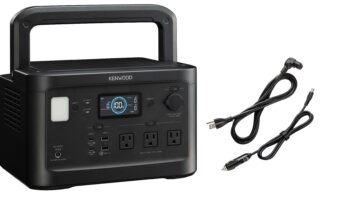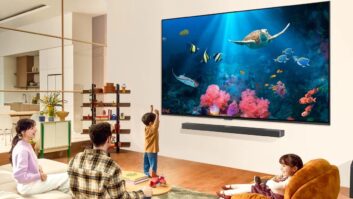Manufacturers of LCD panels used in small- to midsized LCD TVs and monitors have started increasing prices they charge TV makers by a couple of dollars a month since February, analysts report, but the added cost isn’t expected to be passed along to the store level so far.
Instead, analysts contacted by TWICE expect street prices on finished goods to stabilize a little longer than they ordinarily would have.
So far, most of the pricing activity has impacted smaller screen panels, and not the larger products, analysts said. Prices on panels 40 inches and larger have actually declined throughout 2008 and continued on declining through the first quarter of 2009.
Sweta Dash, iSuppli LCD research director, confirmed for TWICE that panel prices have been increasing on small-screen panels since January this year after eight months of price reductions.
“The panel prices for [PC] monitors and small-size TVs (32 inches and smaller) have increased on average $5 to $10 from the January to April period,” Dash said.
The firm said price hikes can be attributed to a variety of factors including rush orders in March from Chinese manufacturers looking to meet rising demand in the domestic market following the implementation of a rural economic stimulus program.
Retailers have also been increasing orders for LCD TVs in recent weeks to refill inventory levels that have been kept unusually lean since the end of last year due to the economic uncertainty, iSuppli reported.
Paul Gagnon, DisplaySearch North American TV market research director, said: “Panel prices have been increasing lately, mostly for sub-46-inch screen sizes, as panel makers attempt to bring prices back in line with at least the material cost to produce them. Most panel sizes that have gone up from February to March have had increases in the $2 to $4 range. We expect that they could increase by a similar monthly rate through the rest of the year.”
Tamaryn Pratt, Quixel Research principal, agreed, saying that the 32-inch screen size, which is among the most popular for retail LCD TV sales, has been the most impacted by panel price increases. She said the increases also resulted, in part, from LCD fabs scaling back production following the economic downturn at the end of 2008, which has also forced some opening price point (OPP) LCD TV brands to take less risk with inventory.
“Now when there is an open to buy/spot buy there are fewer low-cost players available with product since it takes such a long time to go from order to shelf, and [private label] store brands are generally even less likely to take risks,” Pratt observed. “As a result, the majors are able to step in with their entry product.”
“Overall average selling prices could hold up a little better because there is less available from the OPPs but there won’t be price increases,” Pratt added.
As for the long-range impact of the cost increases, iSuppli’s Dash said: “I really don’t think [the panel price hikes] will have an impact on end-user TV prices right now. Panel prices have been reducing since end of Q208. Panel prices have reduced already more than 50 percent to 55 percent during that time. But TV set prices have only reduced 15 percent to 20 percent. So a 5 percent to 10 percent panel price increase will not have any immediate impact.”
“Passing along those price increases at retail is a much more difficult thing to do,” DisplaySearch’s Gagnon said. “Consumers who don’t see prices changing much may decide to defer their purchase, especially in this economy, until prices start falling again, regardless of the fact that even steady prices now are a great deal compared to a few years ago.”
Ultimately, set manufacturers will attempt to recoup their losses as new model lines are rolled out bringing new feature sets that will warrant higher price tags, such as models with LED backlighting and 120Hz-240Hz smooth-motion processing.
“Model resets are the best time to push prices back up since the introduction of new models can often justify a new, higher price point,” Gagnon said. “As the model life progresses, manufacturers and retailers can push along fewer discount promotions, in effect keeping price erosion from progressing faster than the reduction in production costs.”
Regarding the outlook for the rest of the year, Gagnon said that set manufacturers absorbing prolonged panel price increases “is more difficult to do. In this situation, TV brands may have to increase their prices, which is exceedingly rare in this industry and the result could be a large drop in demand.”
But, Quixel’s Pratt, added, “It is doubtful that this situation will continue throughout the year. TV pricing never goes up.













